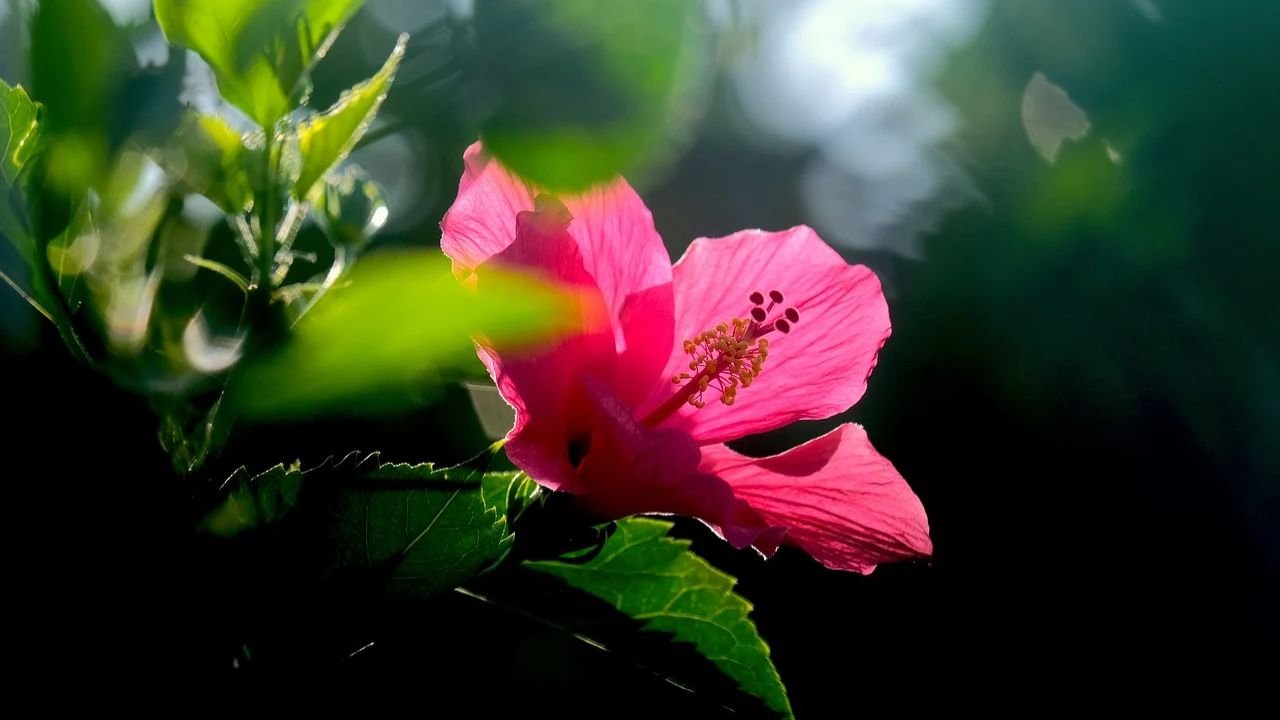Hibiscus rosa-sinensis (also known as Chinese hibiscus or tropical hibiscus) is very easy to grow at home and can be beneficial to us in many ways. It produces large, colorful flowers. These flowers are used in many ways. Here is a step-by-step guide to growing it:

Scientific Name: Hibiscus rosa-sinensis
Steps to Grow Hibiscus rosa-sinensis at Home
To grow Hibiscus rosa-sinensis, choose a variety that is suitable for your climate. It grows outdoors all year round in tropical or subtropical regions. It cannot tolerate extreme cold, so in colder regions, people grow it in pots indoors or bring it indoors during the winter.
Choosing the Right Light, Temperature, and Soil for Growing
- Light: Hibiscus needs full sunlight to bloom well. So grow it in a place where it can get at least 6 hours of direct sunlight a day.
- Temperature: Hibiscus needs temperatures between 60°F (15°C) and 95°F (35°C) to grow. It cannot tolerate cold wind or sudden changes in temperature, so avoid planting it in places with such temperatures.
- Soil: Choose well-draining soil with plenty of organic matter to grow it. To make the soil better drained, you can use a mixture of some sand or perlite in it.
Steps to grow Hibiscus rosa-sinensis plant
Choosing a proper place to grow
- Pot: To grow in a pot, choose a pot with a diameter of at least 12-16 inches with holes for drainage. Hibiscus cannot live in wet soil, so good drainage is important.
- Garden: To plant it directly in the ground, loosen the soil, and add compost or organic matter to improve the fertility of the soil.
The right way to plant hibiscus
- Planting seeds or cuttings: It can be grown through seeds or small plants. Its seeds and plants can be purchased from a nursery near your home.
- To seed its seeds in the soil, soak them in warm water for at least 24 hours.
- Planting the plant: To plant the plant brought from the nursery, dig a hole in the soil twice the size of the root ball, place the plant in it, and cover it with soil. Water thoroughly.
- When watering hibiscus plants, be careful not to let the soil get waterlogged, as the plants do not like being waterlogged. Water the plant deeply and allow the top inch of soil to dry out between waterings.
- Water the plants frequently from spring to fall, but reduce watering during the colder months.
Fertilize the soil
- Fertilize the plant with a balanced liquid fertilizer (such as a 10-10-10 or 20-20-20 mix) every two weeks during the growing season. Use a fertilizer rich in potassium to encourage flowering.
Pruning and mulching
- Pruning your plant helps maintain its shape and promotes more flowering. It is best to prune in early spring.
- Prune dead or weak branches and cut back up to one-third of the plant to encourage bushy growth.
- Apply a layer of organic mulch around the base of the plant to retain moisture, suppress weeds, and regulate soil temperature.
Pest and Disease Control
- Hibiscus attracts pests such as aphids, whiteflies, and spider mites. Use an organic foliar insecticide to protect the plant from pests.
- Do not allow the roots to become waterlogged to prevent fungal infections.
Re-pot the hibiscus plant every 2-3 years. Choose a pot 1-2 sizes larger than the current pot to replant it in, and fertilize the soil when replanting it.
It usually blooms for a day or two, but if well cared for, it can produce new flowers regularly.
By following these steps above, you can have a healthy, flowering Hibiscus rosa-sinensis in your home or garden!
Remember, before starting any new wellness regimen, it’s always best to consult with a healthcare professional to ensure it is suitable for your specific needs and circumstances.